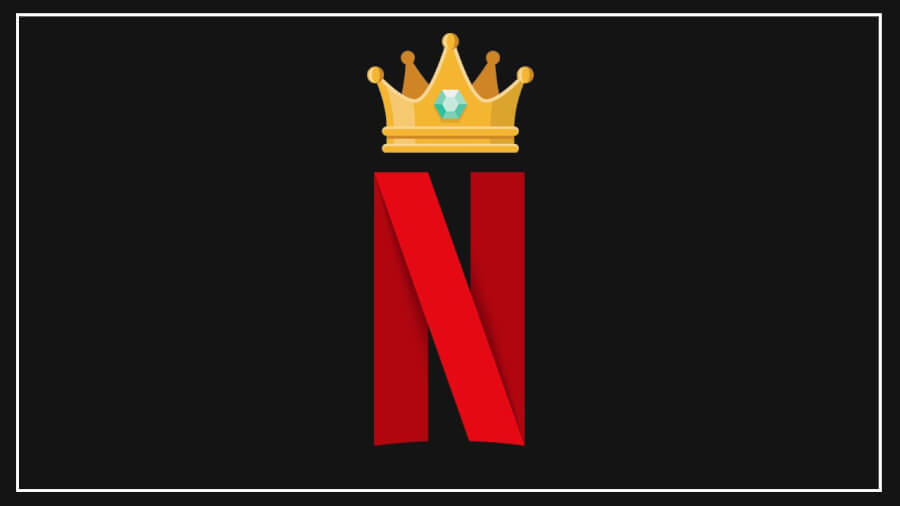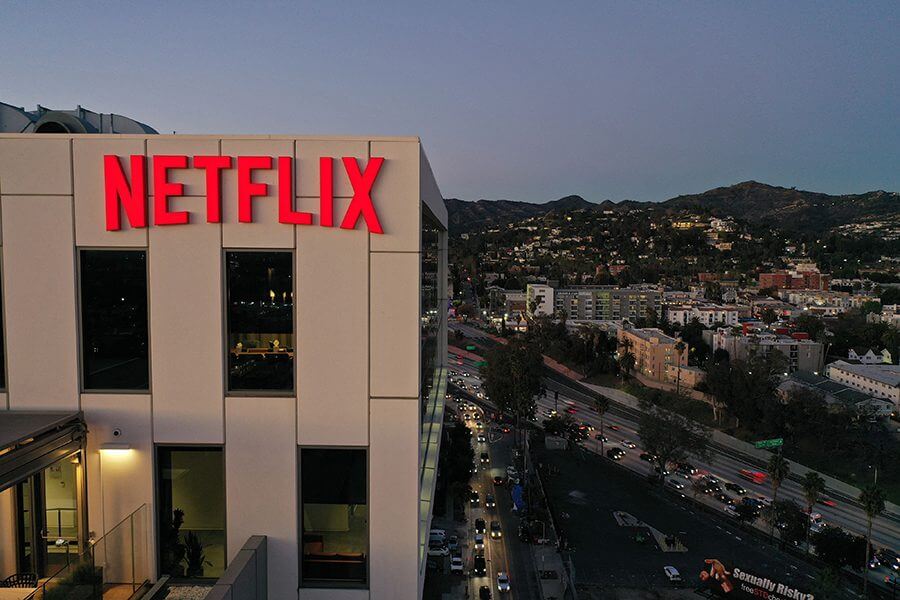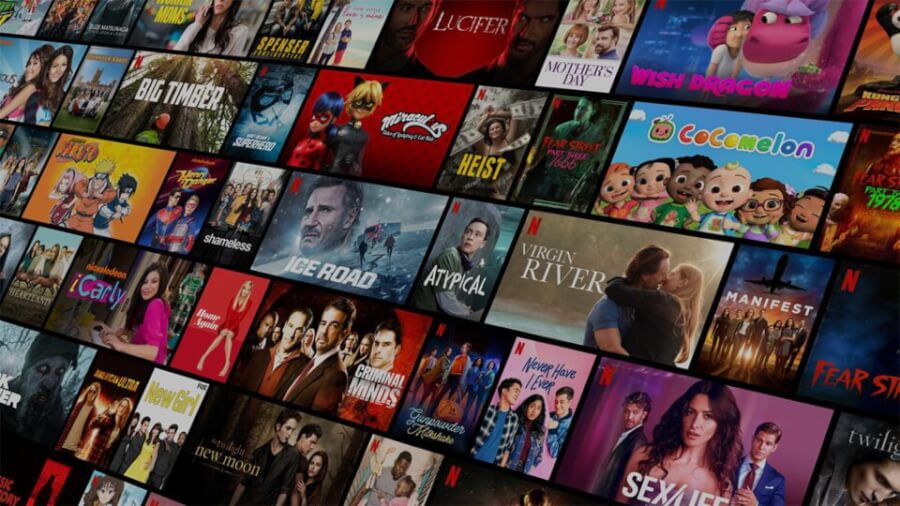
Netflix has long held the position of being the top dog in the streaming wars. It still manages to be ahead in terms of global subscribers compared to old rivals such as Prime Video and Hulu as well as newcomers such as Disney+ and HBO Max. But how can Netflix keep its streaming crown?
There’s plenty of opinion and analysis on how Netflix should grow and where they should invest their limited time and money but we decided to pitch the question to streaming insiders, observers, and fellow journalists.
How can Netflix keep its streaming crown and what should they do next?
The Entertainment Strategy Guy is a former executive in the entertainment industry. In recent years, ESG has contributed to The Ankler, What’s on Netflix, and writes on his own blog too. We asked him to reflect on the bad quarter and offers two ideas as to how Netflix can keep in front:
“Up front, I’m as willing to acknowledge as anyone that Netflix is top of the streaming heap. They had a bad quarter, but they still dominate most metrics on streaming ratings and performance. How can they stay that way? I have two recommendations. First I’d fix some small things. Like releasing some select series weekly in season two. The series need to be big splashy and drive a conversation. (Think The Witcher, You, Stranger Things, Squid Game or Bridgerton.) This would help keep customers on the service.
Second, I’d not just consider, but find a way into live sports. Sports are the key piece of the TV puzzle. Without sports, Netflix will always have competitors luring away viewers, then trying to keep them. Sports are ungodly expensive, but Formula 1 or top tier European (and United Kingdom if they don’t think they’re a part of Europe…) soccer clubs provide a global sports product. Disney right now has had success in India mainly because Hotstar has cricket.”

Photo by Hasan Bratic/DeFodi Images via Getty Images
Christopher Meir is a friend of What’s on Netflix who operates The Netflix Film Project and is an academic at University Carlos III of Madrid. As his focus is Netflix’s movie lineup, I asked about how Netflix should handle its movie strategy moving forward:
“Netflix’s best solution for improving the fortunes of its film slate may lay in that old adage that “less is more.” Instead of constantly increasing the volume of releases, maybe the best way forward is to release fewer film and to promote them better. Audiences were already struggling to keep up with all the titles coming at them BEFORE Netflix amped up its film releases and before Amazon and Apple followed suit, and now that there is so much competition for eyeballs that it’s virtually impossible to keep up with even releases in your preferred genres, or languages or whatever. Instead of several films a week, why not release a couple per month? Then lavish those titles with the kind of dedicated PR blitzes and in-app pushes that films like Red Notice and Don’t Look Up have received. This would reduce the clutter, allow audiences to focus, and save Netflix money all at once. It also just might prolong the lifespan of Netflix’s films. The company seems right now to only care about the first 28 days that the films are on the service, and perhaps for that reason few films end up being remembered after the first month or so after their releases.
A case in point for the problem of logjams of film releases can be seen in the ways in which Netflix releases virtually all of its ‘quality’ awards-contender films between October and December. Yes, this is traditionally ‘awards season’, but with so many titles out, many end up cannibalizing one another in terms of audience viewership and critical praise. It doesn’t help that the company also releases a lot of it big holiday tentpoles at this time, taking up even more oxygen from audiences and journalists. Why not spread the awards contenders out over the year? CODA’s nominations this year are reminders that the films can be remembered by awards voters IF the platform puts in the work when it comes to promotion and curation. This would require Netflix to use Sundance and Berlin more effectively and to bury the hatchet with Cannes so that they could use these festivals in the way that they have done so well with Venice, Toronto and the AFI. Such enhanced cooperation with the traditional gatekeepers of the film business would be good news for everyone involved, Netflix subscribers included.
Again, less can be more: imagine a future in which a couple of awards contenders, a couple of tentpoles and a romcom or two (or whatever other genres) come out every month, rather than the dozens of films that are coming out some months right now.”

Don’t Look Up – Picture: Netflix
Emily Horgan is an independent media analyst and regular contributor to our website primarily focusing on Netflix’s kids strategy. As such, her answer focuses more on Netflix’s kid’s strategy and how it can expand in the space and what their future prospects looks like at the moment.
“A common thing we’re seeing among all 4 quadrant streamers is the engagement driven by animated franchise films. Before we could only see whether the DVD was bought. With streaming we can see how much it’s being played, and no parent will be surprised that, for favourite films, it’s a lot.
Netflix are yet to produce a big animated hit movie themselves. They’ve gratefully coasted on output from other studios, which is never a sure thing. When Sony went with Prime for Hotel Transylvania 4, after having a great run of form in 2021 with Netflix on Mitchell’s, Wish Dragon and Vivo… ouch!
There’s a few very exciting features in the works at Netflix for sure, but at least one of these needs to hit broadly and ideally set up an IP where bankable sequels and spin offs can be mined. The other question on this is whether a critical mass of excitement can be generated for a feature that doesn’t see a theatrical release. Netflix, in particular, need to figure that out if they’re to preserve the value proposition they offer families.”

Family Film The Sea Beast Coming Soon to Netflix
Brandon Katz is an entertainment host at Morning Brew and a former journalist at Observer. He’s a knowledge fountain when it comes to tracking the ins and outs of the streaming world when asked whether or Netflix would be losing their streaming crown anytime soon, he responded with:
“Netflix has long sold Wall Street on the narrative that it is a tech stock with huge long-term growth potential. That sort of spin worked wonders for its share price over the last decade as the streaming service added hundreds of millions of subscribers. But with the domestic market saturated and content spend outstripping subscriber growth, Wall Street is now viewing Netflix through the lens of a traditional media company. That necessitates adaptation on the streamer’s part.
Analysts have been shouting about Netflix’s need to innovate its business model for years; solely relying on subscription revenue is akin to the Los Angeles Lakers always counting on LeBron James’ superhuman ability to save them. We know the company is expanding into video games, VR, branding and merchandising, live events and experiences, but we still don’t know where that extra revenue and engagement is going to come from. Maybe Netflix finally introduces an ad-supported tier, maybe they buy a game company (Roblox?) or maybe they look to theatrical box office. Either way, entertainment is a hits-driven business and Netflix, despite unrivaled years long investments in overseas content hubs, needs a more diverse array of hits across different mediums.
Netflix won’t lose the streaming crown anytime soon. Barring a cataclysmic occurrence, they will be one of the final streamers standing. But that doesn’t mean they should be content with the status quo.”

Photo by ROBYN BECK/AFP via Getty Images
Julia Alexander is a prominent figure in the streaming sphere having worked at The Verge and IGN but more recently transitioned into a senior strategy analyst at Parrot Analytics while contributing to Puck News and co-hosting on the excellent Downstream Podcast.
Julia’s answer specifically hone in what tactics they can employ moving forward to keep churn down and continue to grow:
“Let me just start by saying what I usually say on Twitter: Netflix is fine at this moment and Netflix will likely continue to be fine for the foreseeable future. The company managed to get every legacy media company to pivot its entire distribution model and, if that turns out to be a bad decision as some have hypothesized, it’s going to take some time. Will that happen? It seems unlikely, but never trust anyone who deals in absolutes.
So to answer this question, first let’s look at what we know:
- Subscriber growth has effectively stalled in the United States. At 75 million households with a Netflix account (roughly the same as Pay TV customers but amassing far less revenue per user), it feels like growth trajectories for the platform aren’t going to change much even with room for more household penetration. Netflix is focused on acquiring new subscribers, of course, but also trying to bring back in those who left — possibly for a competitor.
- The majority of Netflix’s content spend is going toward global series and films, where there is more growth opportunity (especially in APAC, with key regions like South Korea and India a crucial strategic bet). That growth doesn’t provide the same revenue as the United States per user, but the content spend is in US dollars. Netflix is burning cash to grow, and not seeing the 1:1 dollar return. But Netflix has to subsidize some of its bigger markets, where the cost of entry might need to be lowered and content spend might need to increase, to eventually build a foundational base and start increasing subscription prices to increase revenue.
- Netflix is looking for new areas of revenue to help offset stagnating growth in the US and continuously increasing content spend. This includes games, live events, and merchandising, but these take time to execute well, and Wall Street is impatient. As Netflix builds its flywheel, how can its streaming business continue to grow to support the investment and time needed to build those divisions?
If there was an easy answer, Netflix executives would have figured it out. Here are a couple of suggestions that make sense to me.
- Move to annual subscriptions in the United States.
- Part of the issue that Netflix will run into in the US specifically is stronger competition and customers potentially leaving month-to-month-to-month. Netflix still has a relatively low churn rate in the United States and, planning a switch when entering a strong quarter, might make the transition easier. This is still a risky bet; an annual price mandate can prevent new customers from signing up, and may turn away others. But if the churn remains low, and content demand remains high, then an annual subscription locks customers in. That’s valuable, steady revenue in the United States that doesn’t necessarily fluctuate every quarter.
- Bundle with a similar, but different product.
- Netflix had the advantage of being first and, as a result, the biggest. Its competitors have strength in offerings, plural. Disney can bundle three different streaming services for discounted price. ViacomCBS and NBCUniversal can offer live sports on top of entertainment programming. WarnerMedia basically gives customers HBO — and then a ton of “free” content. Netflix doesn’t have this, but Netflix can partner with another subscription service to increase overall revenue and drive growth. An audio company like Spotify, perhaps? Or a book service — especially if those books become shows and movies on Netflix.
- Introduce a light ad-supported tier.
- Oh, I know. The blasphemy! It will never happen! Never in a million years! But…why not? If part of the issue with Netflix is the price has outweighed cumulative demand for content, then a lower price tier with non-invasive ads may create a new consumer pool that will return to or sign up for Netflix because their perceived value for the product is now in-line with a price point they’re willing to pay. I know Netflix executives keep saying, “Why ads?” But maybe it’s time to consider, “Why not ads?”

Netflix Library – Picture: Netflix
Among the disappointments talked about in Netflix’s most recent investor video was how Netflix has seemingly failed to crack India yet.
We asked Suchin Mehrotra, who is a journalist at the outlet Film Companion, to try and figure out what’s going wrong and host to rectify their strategy in India.
“While Netflix is undeniably a major player within India’s booming streaming landscape, the streaming giant certainly isn’t leading the pack as it is in many other global territories. According to media consultancy Media Partners Asia, as of December 2021, Netflix India stands at close to 5 million subscribers, as against Disney+Hotstar’s 46 million and Amazon Prime Video’s 19 million.
As to where the streamer is going wrong in India, most would agree it’s a reflection of both content and an especially price sensitive consumer base (Netflix recently significantly reduced its subscription fees in India). While Netflix is arguably most recognised and celebrated for its addictive original series, its Indian originals have proven particularly unremarkable with what’s felt like a factory line of misfires since its launch in 2018 (Jamtara, She, Taj Mahal 1989, Bhaag Beanie Bhaag, Hasmukh, Bard Of Blood, Betaal). Many have offered intriguing concepts and featured top talent but poor execution.
Aside from its very first original Sacred Games – a sophisticated, well-crafted gangster drama led by top Bollywood talent in front of and behind the camera – the few noteworthy wins the streamer has seen have largely been projects that have been acquired rather than commissioned. Whether it’s shows like the Emmy award winning Delhi Crime, or later seasons of existing young adult series with an established following such as Kota Factory and Little Things. Not to mention a number of notable film acquisitions (Milestone, The Disciple, AK vs AK, Ludo, Minnal Murali). Certain reports have claimed that it’s partly due to creative interference from the Netflix India team which in many cases have reportedly stifled storytellers rather than supported their vision.
Instead, most of India’s most celebrated streaming shows and movies have emerged from Amazon Prime Video (Mirzapur, The Family Man, Paatal Lok, Made In Heaven), which continues to lead the charge as the best platform for Indian storytelling of all shapes, sizes and languages. .
It’s safe to say then, that, as of now, there’s certainly no sign of the next Squid Game, Money Heist or Narcos emerging from India anytime soon.”
Fellow streaming fansite What’s on Disney Plus is run by Roger Palmer. Their site does a similar job to us in keeping track of the comings and goings of Disney+ on a granular level. With him tracking Disney+ I put the question as to how and what Netflix should do to keep their streaming crown:
“One thing I feel Netflix really has to start doing to keep its crown, is start promoting its significant new content much better. Because Netflix is releasing so much content, it rarely gives time to actually promote films and shows appropriately. I rarely see a Netflix trailer pop up on my social media feeds, and I can’t remember if I’ve ever seen Netflix advertise a show or film on TV, on billboards, buses, or at the cinema. Shows like “Stranger Things”, “Squid Game”, and “Tiger King” all seem to have exploded because of word of mouth, rather than actual advertising.
Netflix has done an incredible job in building its streaming business. It revolutionised how we all watch content. Its pivot from relying on licensed content to creating its own original programming, once Disney and other studios started pulling content from Netflix, has been working. But Netflix feels like it’s been throwing spaghetti at a wall to work out what will draw audiences. It often feels like it’s so focused on releasing as much content as it possibly can, it doesn’t give its amazing content room to breathe.
I know Netflix fans will disagree with me on this, but I really think Netflix could benefit from slowing down its release schedule, especially with TV shows and experiment more with weekly drops on new episodes. Disney+ will spend 8 to 10 weeks promoting a single six-episode series, Netflix will probably have released 10+ series in the same time frame. Every week, there is a buzz over a new episode and discussions about what happened in it. You don’t get that with Netflix, because everyone is watching at a different pace, so everyone is on a different episode. People might binge through a new series in a week, but I’d suggest Netflix slows down, spend time promoting its great content and give the audience time to enjoy it.”

Squid Game – Picture: Netflix
There you have it – views on how Netflix can continue to grow and keep its streaming crown into the future. Do you agree or disagree with any of our contributors? Let me know down in the comments.




